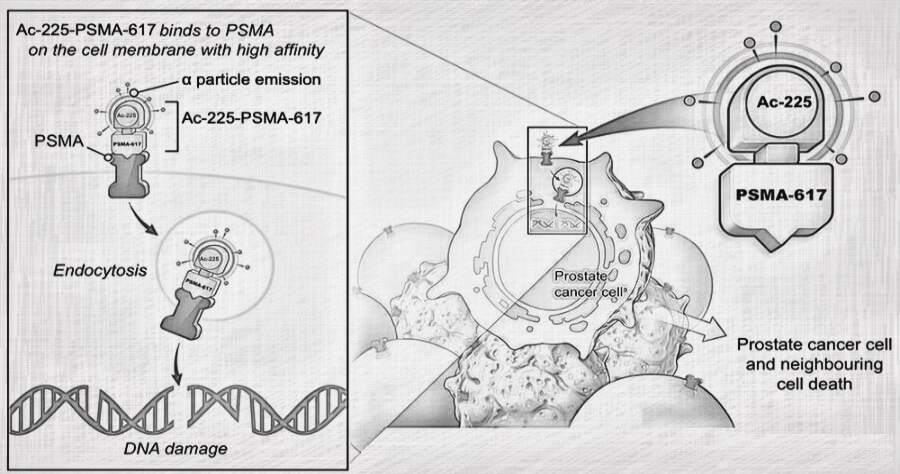Actinium might sound like something out of a superhero movie, but it’s a real element with a surprising superpower: targeted cancer treatment. While actinium itself doesn’t get all the glory, a specific isotope, actinium-225 (Ac-225), is making waves in the medical field. Let’s dive into the world of actinium-225 and see why it’s such a promising weapon in the fight against cancer.
Why Choose Actinium-225 for Cancer Treatment?
Traditional cancer treatments like chemotherapy and radiation can be tough on the body. They damage healthy cells along with cancer cells, causing nasty side effects. Actinium-225 offers a more targeted approach. It’s a radioactive isotope, meaning it releases energy as it breaks down. This energy comes in the form of alpha particles, which are tiny, but mighty, packets of radiation.
The magic of alpha particles lies in their range. Unlike other forms of radiation that travel far and wide, alpha particles have a very short travel distance – just a few cell diameters. This means they can deliver a powerful punch to cancer cells while leaving healthy cells relatively unharmed. It’s like a sniper taking out the enemy with minimal collateral damage.
Here’s a breakdown of the key benefits of actinium-225:
Targeted Therapy: Actinium-225 can be attached to molecules that seek out specific cancer cells. This ensures the radiation goes straight to the enemy, minimizing harm to healthy tissue.
High-Energy Attack: Alpha particles from actinium-225 pack a wallop. They damage the DNA of cancer cells, making it difficult for them to repair themselves and keep growing.
Effective against Hard-to-Treat Cancers: Some cancers are notorious for being resistant to traditional treatments. Actinium-225 shows promise in treating these aggressive cancers.
The Steps Involved in Actinium-225 Treatment
Actinium-225 treatment is still under development, but here’s a general idea of how it might work:
Preparation: Doctors will first assess your individual case and determine if actinium-225 is a suitable treatment option.
Attaching the Weapon: Actinium-225 is attached to a targeting molecule specific to your type of cancer.
Delivery: The radioactive cocktail is then injected into your body, where it travels through your bloodstream.
Seeking and Destroying: The targeting molecule guides the actinium-225 to the cancer cells, where it unleashes its alpha particle attack.
Looking Ahead: The Future of Actinium-225 Treatment
Actinium-225 is a promising new weapon in the fight against cancer. However, there are still some hurdles to overcome:
Limited Availability: Producing actinium-225 is a complex process, making it a rare and expensive isotope. Researchers are working on ways to increase production to make it more accessible.
Clinical Trials Ongoing: Actinium-225 is still in the early stages of clinical trials. More research is needed to determine its long-term effectiveness and potential side effects.
Frequently Asked Questions
Is actinium-225 a cure for cancer?
While actinium-225 shows promise, it’s not a guaranteed cure. Its effectiveness depends on the type and stage of cancer.
Are there any side effects to actinium-225 treatment?
As with any medical treatment, there can be side effects. Since actinium-225 targets rapidly dividing cells, side effects might include fatigue, low blood cell counts, and nausea. But these are generally less severe compared to traditional treatments.
Who can benefit from actinium-225 treatment?
Actinium-225 is being investigated for various cancers, including leukemia, prostate cancer, and brain tumors. Doctors will determine if it’s a suitable option based on your specific case.
Conclusion
Actinium-225 represents a revolutionary approach to cancer treatment. Its targeted therapy with alpha particles offers a powerful and potentially less damaging way to fight cancer. While there’s still a way to go before it becomes widely available, actinium-225 is a beacon of hope for many cancer patients. With continued research and development, this rare element might become a more common weapon in our fight against this devastating disease.




